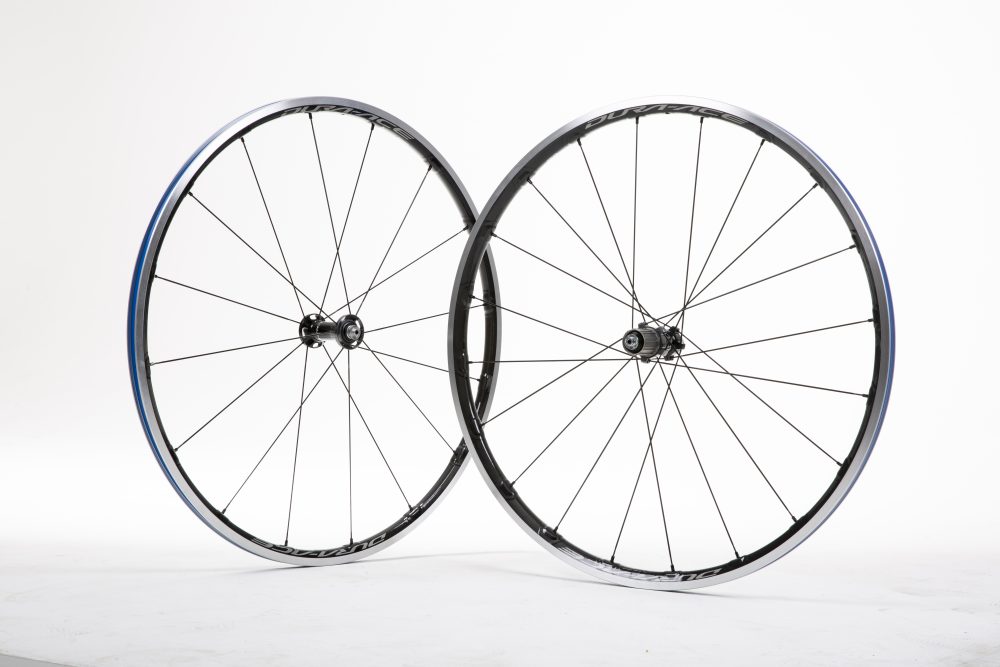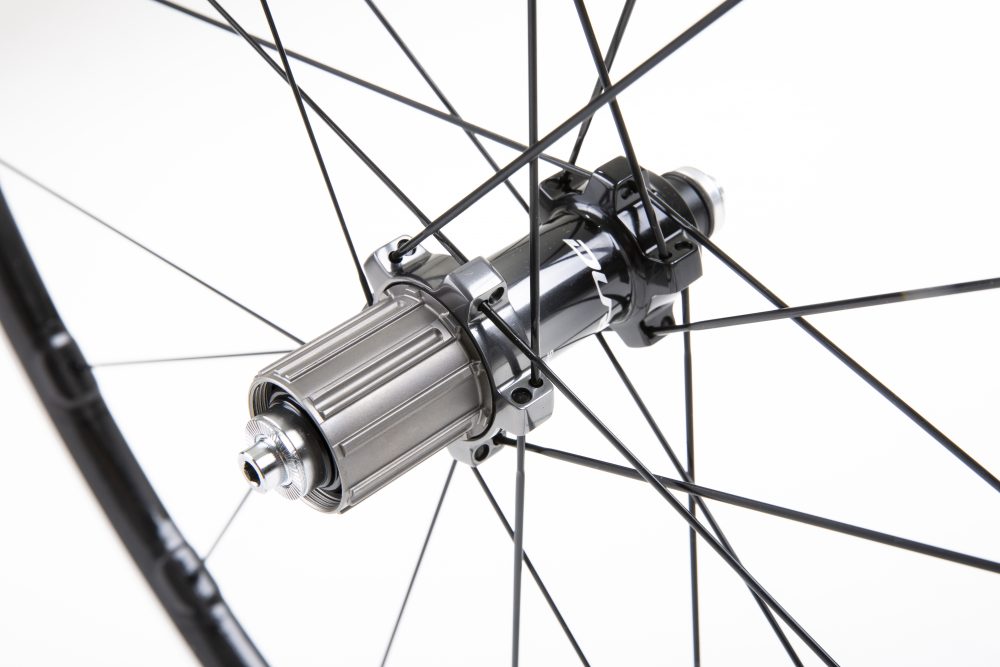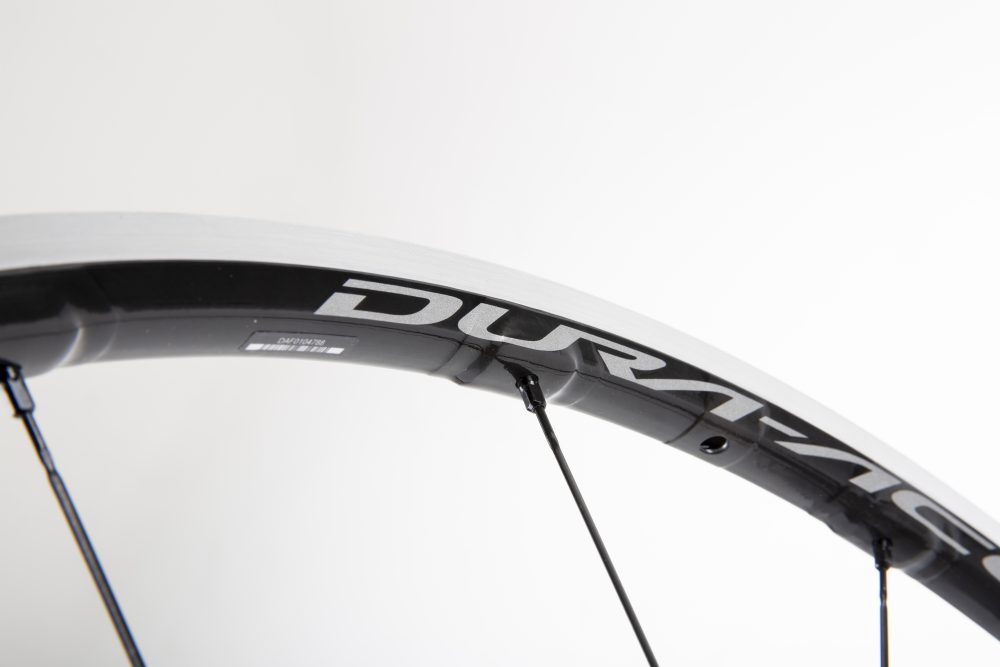Shimano Dura-Ace C24 9100 wheels review
The Dura-Ace aluminium/carbon climbing wheel has excellent credentials for a lower price than you might expect

So they’re not crazy lightweight and crazy stiff unlike some carbon climbing wheels, but for the money you’re still getting an impressive lack of grams and a good quality product despite the slightly raised front rim joint. In addition, the C24s are far more versatile and certainly not too fragile or expensive to be used all year round.
-
+
Light
-
+
Stiff
-
+
Good looking
-
+
Super-smooth (and adjustable) bearings
-
-
Rim joint slightly raised when new
-
-
Narrower than modern wheels
You can trust Cycling Weekly.

The Shimano Dura-Ace C24 clinchers have been in Shimano’s range for a while, using the same aluminium and carbon hybrid design but with updated graphics to match the latest iteration of the flagship Dura-Ace groupset, 9100. For that reason the C24s stay relatively cheap, and indeed it’s easy to find them online at well below their SRP of just under a grand, with the 9000 version even cheaper if you can still find them.
As you’d expect of a Dura-Ace level wheel, it’s a high-quality product with some standout bits such as a titanium freehub body and beautifully milled hubs.
In fact, the Shimano Dura-Ace C24 is a really good-looking wheel all over, with a slightly old-school, spindly aesthetic thanks to the shallow-section rims (21mm at the front and 24mm out back), low spoke count and aluminium brake track (alleluia, some will shout). The rim width stays narrow, helping keep weight low by reducing material.

Our test set weighed 1,471g, slightly over their quoted weight (by Shimano) of 1,452g, though most retailers seem to have a slightly lower weight again of 1,389g.
We found the Shimano Dura-Ace C24 supplied a very nice ride quality. For a relatively light wheel with a rim not as resistant to deflection as a deep-section carbon rim they were stiff enough, too. Widely spaced hub flanges and a high spoke tension help these wheels perform very well up steep climbs, with no rubbing of close-set brake pads.
The fact that the rims are narrow, with an external diameter of 20.8mm compared to the new-style, wider rims measuring 25 or 26mm across the brake track, means a skinnier, longer contact patch and taller rather than fatter tyre, but brake calipers can exert more force on the rim when they're not wide open, so there are certainly pros and cons.

And of course braking is excellent with the ‘normal’ pads on an aluminium braking surface but it was possible to feel – and hear – the joint of the front rim, something we didn’t expect from a Dura-Ace component. We haven’t put enough miles on them yet to find out, but we imagine this will wear smooth shortly.

Thank you for reading 20 articles this month* Join now for unlimited access
Enjoy your first month for just £1 / $1 / €1
*Read 5 free articles per month without a subscription

Join now for unlimited access
Try first month for just £1 / $1 / €1
Get The Leadout Newsletter
The latest race content, interviews, features, reviews and expert buying guides, direct to your inbox!
Simon Smythe is a hugely experienced cycling tech writer, who has been writing for Cycling Weekly since 2003. Until recently he was our senior tech writer. In his cycling career Simon has mostly focused on time trialling with a national medal, a few open wins and his club's 30-mile record in his palmares. These days he spends most of his time testing road bikes, or on a tandem doing the school run with his younger son.
-
 Man hands himself in to Belgian police after throwing full water bottle at Mathieu van der Poel during Paris-Roubaix
Man hands himself in to Belgian police after throwing full water bottle at Mathieu van der Poel during Paris-Roubaix30-year-old was on Templeuve-en-Pévèle cobbled sector when television pictures showed the bottle hitting him in the face
By Tom Thewlis Published
-
 'I'll take a top 10, that's alright in the end' - Fred Wright finishes best of British at Paris-Roubaix
'I'll take a top 10, that's alright in the end' - Fred Wright finishes best of British at Paris-RoubaixBahrain-Victorious rider came back from a mechanical on the Arenberg to place ninth
By Adam Becket Published
-
 'This is the furthest ride I've actually ever done' - Matthew Brennan lights up Paris-Roubaix at 19 years old
'This is the furthest ride I've actually ever done' - Matthew Brennan lights up Paris-Roubaix at 19 years oldThe day's youngest rider reflects on 'killer' Monument debut
By Tom Davidson Published